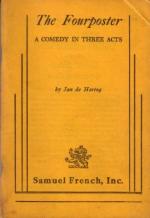|
This section contains 281 words (approx. 1 page at 400 words per page) |

|
1940-1945: During World War II, the Netherlands officially maintains neutrality, despite the fact that its citizens are largely sympathetic to the Allied cause, and the country is occupied by Nazi Germany during these years.
Postwar Era: The Netherlands is liberated from German occupation by Canadian forces in 1945. The nation strengthens ties with former allied nations, joining the North Atlantic Treaty Organization (NATO).
Early-Mid-Twentieth Century: Amsterdam, the capital of the Netherlands, is a center of art and culture and embodies a spirit of open-mindedness.
1960s-2000: Amsterdam gains a reputation as "swinging Amsterdam," a mecca of permissiveness, individualism, and counterculture freedoms, appealing to many youths and radicals.
World War II: Anne Frank, a German Jewish girl, hides out with her own and another family in Amsterdam in order to avoid Nazi persecution. They are eventually discovered by the Nazis and sent to concentration camps, where Anne...
|
This section contains 281 words (approx. 1 page at 400 words per page) |

|




